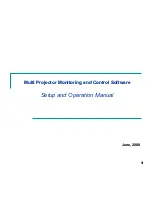
CHAPTER 31. MIDI FACT SHEET
502
data into a plug-in's playback, for example. Jitter-free MIDI timing involves
accurate conversion between different clocks within the system's components
the MIDI interface, audio interface, and the DAW itself. The accuracy of this
conversion depends on a variety of factors, including the operating system and
driver architecture used. Jitter, much more so than latency, creates the feeling
that MIDI timing is sloppy or loose.
31.3
Live's MIDI Solutions
Ableton's approach to MIDI timing is based on two key assumptions:
1. In all cases, latency is preferable to jitter. Because latency is consistent and
predictable, it can be dealt with much more easily by both computers and people.
2. If you are using playthrough while recording, you will want to record what you
hear
even if, because of latency, this occurs slightly later than what you
play
.
Live addresses the problems inherent in recording, playback and playthrough so that MIDI
timing will be responsive, accurate and consistently reliable. In order to record incoming
events to the correct positions in the timeline of a Live Set, Live needs to know exactly when
those events were received from the MIDI keyboard. But Live cannot receive them directly
they must rst be processed by the MIDI interface's drivers and the operating system. To
solve this problem, the interface drivers give each MIDI event a
timestamp
as they receive
it, and those are passed to Live along with the event so that Live knows exactly when the
events should be added to the clip.
During playthrough, a DAW must constantly deal with events that should be heard as soon
as possible, but which inevitably occurred in the past due to inherent latency and system
delays. So a choice must be made: should events be played at the moment they are
received (which can result in jitter if that moment happens to occur when the system is busy)
or should they be delayed (which adds latency)? Ableton's choice is to add latency, as we
believe that it is easier for users to adjust to consistent latency than to random jitter.
When monitoring is enabled during recording, Live adds an additional delay to the times-
tamp of the event based on the buffer size of your audio hardware. This added latency
makes it possible to record events to the clip at the time you
hear
them
not the time you
play
them.
















































